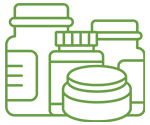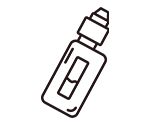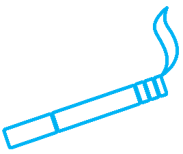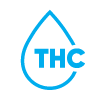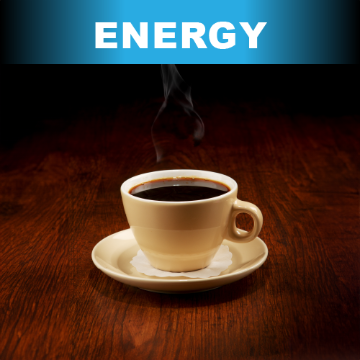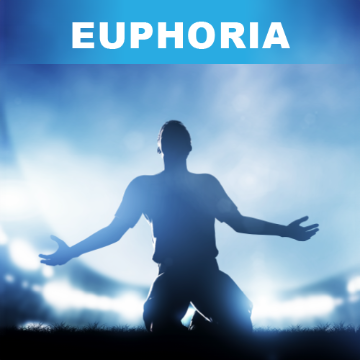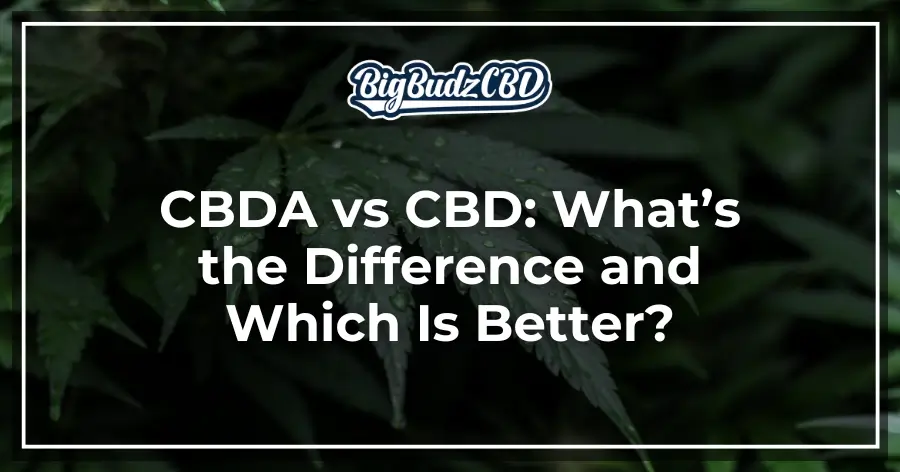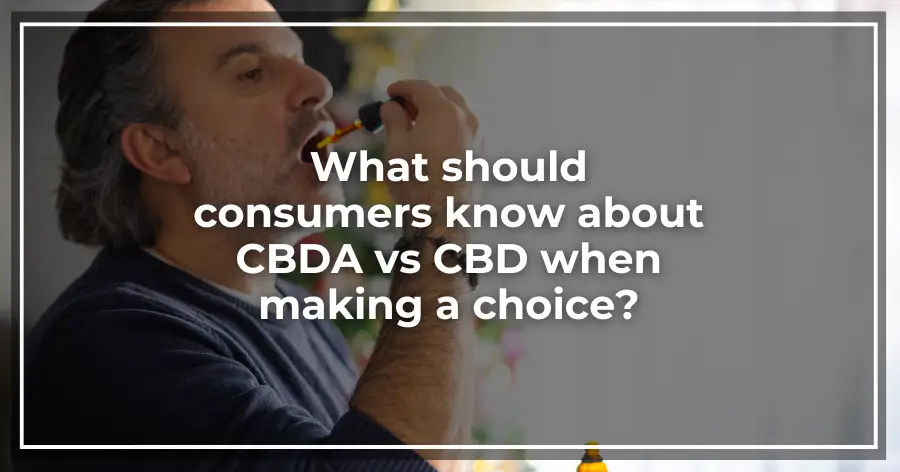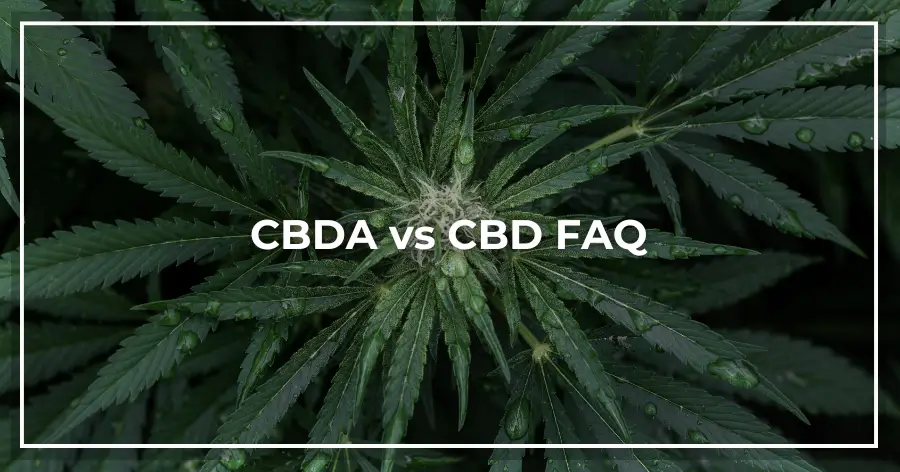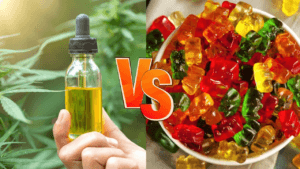Have you ever wondered about the hidden potential of cannabis compounds beyond the well-known CBD?
A new star, CBDA, is gaining attention from researchers and health enthusiasts. It might offer even greater benefits than CBD.
The cannabis plant, including hemp varieties, has many compounds that interact with our bodies in unique ways.
CBDA and CBD are two closely related but distinct molecules. While CBD is well-known, CBDA is emerging as a promising contender with its own benefits1.
CBDA is naturally found in raw cannabis plants. When heated, it turns into CBD.
This change in chemical structure affects how these compounds work with our bodies and our well-being2.
Recent studies have found that CBDA might be more effective than CBD at stopping nausea and vomiting in animal studies1.T
his has sparked interest in using CBDA for managing side effects of chemotherapy.
Understanding the unique properties of CBDA and CBD is crucial.
From how they interact with our bodies to their health benefits, this exploration will help you choose the right compound for your needs.
Let’s discover the secrets of CBDA vs CBD and find out which might be better for well-being.
Key Takeaways
- CBDA is the precursor to CBD found in raw cannabis plants
- Heat converts CBDA to CBD through decarboxylation
- CBDA and CBD have different chemical structures and effects
- Recent studies suggest CBDA may be more potent for certain conditions
- Both compounds interact with the endocannabinoid system differently
- Understanding their unique properties helps in choosing the right product
- Further research is needed to fully explore CBDA’s potential benefits
What is CBDA and how does it differ from CBD?
CBDA, or cannabidiolic acid, is found in raw cannabis plants.
It turns into CBD, a well-known cannabinoid3.
Knowing the difference helps you choose the right cannabis products.
Understanding cannabidiolic acid (CBDA)
CBDA is less stable than CBD. It’s part of the minor cannabinoids group, like CBN and CBC3.
When heated, light, or exposed to oxygen, CBDA turns into CBD.
The relationship between CBDA and CBD
CBDA works differently in the body than CBD. CBD directly affects the endocannabinoid system.
But CBDA works indirectly by binding to enzymes3.
This unique interaction might make CBDA more effective for some health issues34.
Key differences in chemical structure and effects
CBDA and CBD have different chemical structures.
CBDA loses a carboxyl group when it turns into CBD. This change affects how they work in the body.
Studies show CBDA might be better for nausea and anxiety4.
Scientists are trying to make stable CBDA for medical use43.
How do CBDA and CBD interact with the endocannabinoid system?
The hemp plant has over a hundred cannabinoids, like CBDA and CBD.
These compounds work in special ways in your body. They offer many potential benefits5.
CBDA’s unique interaction with the body
CBDA works differently with your body than CBD. It stops the cyclooxygenase-2 enzyme and affects 5-HT receptors.
This might help your mood6. Also, CBDA is more easily absorbed by your body than CBD7.
CBD’s effects on the endocannabinoid system
CBD works with your endocannabinoid system through special receptors.
Unlike CBDA, CBD is made when CBDA is heated65.
Comparing the potential benefits of CBDA and CBD
Both CBDA and CBD have promising uses.
CBD is better known, but some studies say CBDA might be stronger.
Research is looking into CBDA as a treatment for nausea5.
| Characteristic | CBDA | CBD |
|---|---|---|
| Interaction method | Inhibits COX-2 enzyme | Interacts with CB1 and CB2 receptors |
| Bioavailability | Higher | Lower |
| Research status | Emerging | More established |
| Source | Raw hemp plants | CBD products after decarboxylation |
Choosing between CBDA and CBD depends on what you need.
CBD is well-known, but CBDA’s unique qualities are interesting for those looking for something different.
What are the potential health benefits of CBDA compared to CBD?
CBDA and CBD have different health benefits. Let’s look at what makes them special and how they compare.
CBDA’s promising effects on pain relief and inflammation
CBDA might help with pain and swelling.
It works like a Cox-2 inhibitor, which can reduce swelling without harming your stomach8.
This makes it a good choice for natural pain relief.
Studies show CBDA could help with nausea from chemotherapy.
It affects serotonin receptors, which might help before chemo8.
CBD’s well-known therapeutic properties
CBD is known for its calming, anti-inflammatory, and pain-relieving effects.
It stays stable, even when exposed to light or heat9. This stability makes it popular in wellness products.
Exploring the unique benefits of CBDA
Recent studies suggest CBDA might help with Alzheimer’s disease.
It could lower harmful proteins and protect brain cells10.
This is promising for treating neurodegenerative diseases.
CBDA might be more effective than CBD in some cases.
For example, a small dose of CBDA can be 1000 times better at fighting nausea than CBD8.
This could be a big advantage for those with severe nausea.
Both compounds might help with mood and anxiety, but we need more research on CBDA.
As you look into CBD flower strains for focus, remember the unique benefits of each cannabinoid for your health journey.
How are CBDA and CBD products different?
CBDA and CBD products have unique benefits.
Knowing their differences helps you pick the best one for you.
Types of CBDA products available
CBDA products are becoming more popular.
You can find them in raw cannabis juices, tinctures, and creams.
CBDA is found in raw cannabis and hemp plants11.
It’s important to store CBDA correctly. It degrades faster than CBD11.
Variety of CBD products on the market
CBD products are easy to find. You can get cbd gummies, cbd tinctures, and more from trusted sources.
CBD is more stable and easier to store than CBDA11.
Full-spectrum CBD products: Do they contain CBDA?
Full-spectrum cbd products have CBDA and other cannabinoids.
They use the entourage effect for better benefits12.
CBDA and CBD together might improve their effects3.
When picking between cbda and cbd, think about stability, availability, and benefits.
CBD is common, but CBDA has unique benefits being studied11.
Always choose organic, lab-tested products for quality and safety.
Is CBDA more effective than CBD for certain conditions?
Recent studies suggest cbda might be more potent than cbd for some health issues.
CBDA, the precursor to CBD, is getting attention for its unique benefits.
Research findings on CBDA’s effectiveness
A groundbreaking study found cbda is a thousand times more effective than cbd.
It binds to serotonin receptors, which helps with nausea and anxiety in chemotherapy patients13.
This makes cbda a strong tool for managing side effects of treatment.
Conditions where CBDA may outperform CBD
CBDA might be better than CBD for treating many conditions.
It’s 11 times more easily absorbed orally, leading to higher blood levels14.
This could make cbda more effective for pain and inflammation.
Studies also show cbda is great at reducing inflammation.
It does this by lowering the COX-2 enzyme activity, unlike CBD14.
Plus, cbda might help stop the COVID-19 virus from spreading in human cells13.
The current state of scientific evidence
Early research on cbda is promising.
It’s more effective than CBD at lower doses in studies on stress and pain in rodents14.
But, we need more human trials to confirm these findings.
As research on CBDA continues, we might find more areas where it outperforms cbd.
The growing interest in cbda could lead to new treatments and a better understanding of cannabinoids’ role in health15.
How do you consume CBDA and CBD?
There are many ways to take CBDA and CBD. Each has its own benefits and forms.
This makes it easy to find what suits you best.
Methods of taking CBDA
CBDA is found in raw cannabis and hemp plants11. You can juice raw cannabis leaves to get it.
This keeps the compound safe and easy to use.
Tinctures from raw hemp are also good. They keep cannabinoids natural.
This way, you get all the benefits of CBDA.
Popular ways to use CBD
CBD has many ways to take it. You can find it in oils, tinctures, capsules, and edibles15.
Tinctures are great for exact doses.
CBD gummies are tasty and easy to use. If you like to inhale, CBD smokables work fast.
Considerations for choosing between CBDA and CBD products
Think about what you want and how the product stays good. CBDA might be absorbed faster11.
CBD is well-studied and comes in many forms12.
CBDA can spoil easily, unlike CBD11. Both might help with inflammation1511.
Choosing between CBDA and CBD depends on you. Talk to a doctor to see what’s best.
What should consumers know about CBDA vs CBD when making a choice?
Choosing between CBDA and CBD means understanding their differences and benefits.
CBDA is found in raw cannabis and turns into CBD when heated or exposed to UV light16.
CBD is known for its health benefits, but CBDA might be better for fighting inflammation and nausea16.
Factors to consider when choosing between CBDA and CBD
CBDA is very potent, especially in studies. It can help with nausea at much smaller doses than CBD.
It might also be better for pain and inflammation17. CBD, however, has more products and research backing its benefits16.
Your choice depends on what you need and how you want to use it.
Potential side effects and interactions
CBDA and CBD might affect how your body processes drugs.
Always talk to a doctor before using them, especially if you’re on other medications.
The FDA hasn’t approved CBDA or most CBD products for medical use.
The importance of quality and third-party testing
Quality is key, whether you pick CBDA or CBD. Look for products tested by third parties to ensure they’re pure and strong.
This is important to know you’re getting what you’re told.
CBDA is in raw cannabis like juices or extracts, while CBD comes in oils, tinctures, and more16.
CBDA vs CBD FAQ
What is the difference between CBDA and CBD?
CBDA (cannabidiolic acid) is the precursor of CBD (cannabidiol).
The main difference is that CBDA is found in raw cannabis plants, while CBD is produced when CBDA is heated or aged. CBDA converts to CBD through a process called decarboxylation.
While both compounds interact with the body’s endocannabinoid system, they have distinct properties and potential benefits.
Is CBDA better than CBD?
It’s difficult to say if CBDA is definitively better than CBD, as research is still ongoing.
Both compounds have potential benefits, but some studies suggest that CBDA may be more potent in certain areas.
For example, CBDA shows promise in reducing inflammation and nausea at lower doses compared to CBD.
However, CBD has been more extensively studied and is currently more widely available in various forms, including CBD oil.
How do CBDA and CBD interact with the body differently?
CBDA interacts with the body’s endocannabinoid system differently from CBD. While CBD primarily works by indirectly influencing cannabinoid receptors, CBDA is known to inhibit the COX-2 enzyme, which is associated with inflammation.
Additionally, CBDA may have a stronger affinity for serotonin receptors, potentially making it more effective for certain conditions.
However, more research is needed to fully understand the distinct effects of CBDA and CBD.
Can I find CBDA in CBD oil?
Most CBD oil products on the market contain primarily CBD, as the extraction and processing methods typically involve heat, which converts CBDA to CBD.
However, some companies now offer CBDA oil or raw CBD oil, which is made using methods that preserve the CBDA content.
To find CBDA, look for products specifically labeled as CBDA oil or raw hemp extract.
What are the potential benefits of using CBDA?
Research on CBDA is still in its early stages, but studies suggest that CBDA may have several potential benefits.
These include anti-inflammatory properties, anti-nausea effects, and potential anti-cancer properties.
Some studies also indicate that CBDA could be effective in treating anxiety and depression.
However, more research is needed to confirm these potential benefits and understand how CBDA compares to CBD in terms of efficacy.
How is CBDA extracted from the cannabis plant?
CBDA is extracted from raw cannabis or hemp plants using methods that don’t involve heat, as heat would convert CBDA to CBD.
Common extraction methods for CBDA include cold-press extraction or using solvents like CO2 at low temperatures.
These methods help preserve the CBDA in its raw form, allowing for the production of CBDA oil and other CBDA-rich products.
Can CBDA be used alongside CBD and THC?
Yes, CBDA can be used in combination with CBD and THC.
In fact, some researchers believe that using multiple cannabinoids together may produce an “entourage effect,” potentially enhancing the overall benefits.
Products containing a mix of CBDA, CBD, and trace amounts of THC (in legal limits) are becoming more common.
However, it’s always best to consult with a healthcare professional before combining different cannabis compounds.


